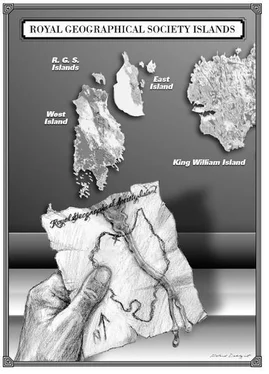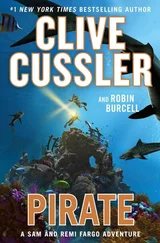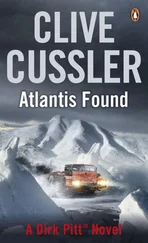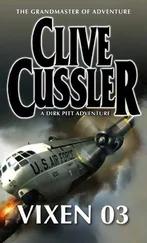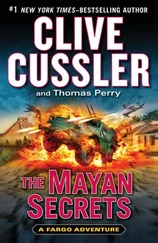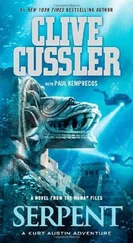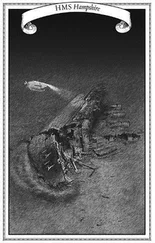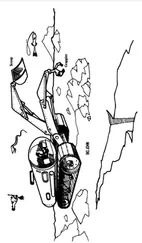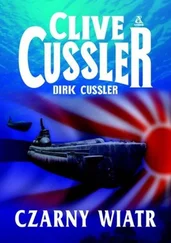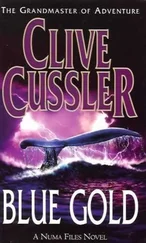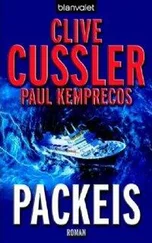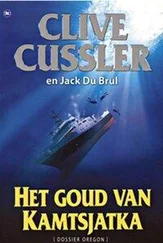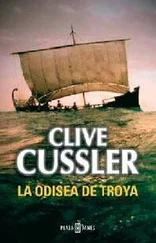“Second AUV is back on board, and here’s what she’s got to say,” he declared, handing Giordino the device. He glanced at the screen, then stared with bulging eyes.
“Shoot, you already found her. Mighty fine-looking wreck,” he added, nodding at the clear image.
“Half of the pair,” Pitt said.
“I’ll start getting the submersible prepped. That will make for a sweet dive to the bottom.”
Pitt and Giordino finished reviewing the first AUV’s imagery, then tore through the data from the second vehicle. The remaining data came up empty. The sister shipwreck was somewhere outside the two initial search grids. Pitt decided against expanding the grids until they determined which wreck they had found.
He made his way to the bridge with the wreck coordinates, where he found Captain Stenseth gazing out the starboard wing. Less than two miles away, the icebreaker Otok came steaming north with its empty barge in tow.
“Lo and behold, a match for one of your friend Goyette’s barges,” Stenseth remarked.
“A coincidence?” Pitt asked.
“Probably,” Stenseth replied. “The barge is riding high, so she’s empty. Likely headed for Ellesmere Island for a load of coal, then back through the passage to China.”
Pitt studied the vessels as they moved closer, marveling at the massive size of the barge. He stepped over to the chart table and retrieved the photograph Yaeger had provided of the Goyette barge under construction in New Orleans. He looked at the picture and saw it was an exact duplicate of the vessel approaching off the starboard beam.
“We have a match,” Pitt remarked.
“You think they’ll report our position to the Canadian authorities? ”
“I doubt it. But there’s a chance they’re here for the same reason we are.”
Pitt kept a wary eye on the icebreaker as it steamed past a quarter mile away. There was no friendly chitchat over the radio, just the silent rocking from the barge’s wake as the vessels passed by. Pitt continued to watch as the icebreaker held a steady north-bound course.
Stenseth must be right, he thought. It only made sense that an empty barge in these parts was headed to pick up a shipment, and Ellesmere Island was well to the north of them. Still, there was something uncomfortable about the appearance of the two vessels. Somehow, he knew, their appearance was no simple coincidence.
“Her name’s the Narwhal . She’s Canadian.” Zak reached over and snatched the binoculars out of the captain’s hands and looked for himself. Studying the research ship, he read her name in white letters across the transom. Peering astern, he found a yellow submersible on the rear deck with NUMA painted on the side. He noted with chagrin a maple leaf flag flying atop the bridge.
“A bold move, Mr. Pitt,” he muttered. “That’s no Canadian ship, Captain. That is an American research ship operated by NUMA.”
“How could an American research ship make its way here?”
Zak shook his head. “With some measure of deception, apparently. I have no doubt that they are here after the ruthenium. The fools must think that it is underwater.”
He watched the NUMA ship fade from view as they continued steaming north.
“Hold our course until we are clear of radar coverage. Stay out of range for an hour or two, then creep back just to the point where you can detect them. If they move, then tail them.” He glanced at the bridge clock. “I’ll return shortly before nightfall with our next move.”
Zak climbed down a companionway to his cabin, intending to take a nap. Failure was making him irritable, however. The mineral assays for the rocks collected on the north shore had come back negative for ruthenium, and now there was the presence of the NUMA ship. Reaching for a bottle of bourbon, he poured himself a glass but spilled a shot when the ship took a sudden roll. A few drops landed on the Inuit map, which he had set on his nightstand. He grabbed the map, holding it up as a trail of bourbon ran down the page. The liquid bisected the island like a brown river, making it appear to be two separate islands. Zak stared at the map a long while, then hurriedly yanked out a satellite image of the island grouping. Comparing the images of West Island, he matched the south and west coastlines exactly but not the eastern shoreline. Sliding the Inuit map over, he then compared its shape to the satellite image of East Island. The eastern coastlines matched perfectly, but there the similarities ended.
“You idiot,” he muttered to himself. “You’re looking in the wrong spot.”
The answer was right in front of him. The narrow waterway that had split the West and East islands had obviously been frozen solid one hundred and fifty years ago. The Inuit map had actually represented both islands, drawn as one landmass. The difference shifted the position of the ruthenium source nearly two miles farther east than he had estimated.
Climbing into his bunk, he swallowed the glass of bourbon, then lay down with a renewed sense of hope. All was not lost, for the ruthenium mine must still be there. It had to be. Content in the knowledge, he turned his thoughts to more immediate issues. First, he reasoned, he had to figure out what to do with Pitt and the NUMA ship.
The strong westerly winds finally began to abate, reducing the seas to a moderate chop. The settling winds brought with it a wispy gray fog that was common to the region during the spring and summer months. The thermometer finally climbed into double digits, prompting shipboard jokes about the balmy weather.
Pitt was just thankful that the weather had calmed enough to launch the submersible without risk. Climbing through the hatch of the Bloodhound , he settled into the pilot’s seat and began checking a bank of power gauges. Beside him in the copilot’s seat, Giordino reviewed a predive checklist. Both men wore just light sweaters, shivering in the cold cabin they knew would soon turn toasty from the electrical equipment aboard.
Pitt looked up as Jack Dahlgren stuck his poker face into the hatch.
“You boys remember, those batteries don’t hold their charge so well in this cold weather. Now, you go bring me back the ship’s bell and I might just leave the lights on for you.”
“You leave the lights on and I just might let you keep you job,” Giordino uttered back.
Dahlgren smiled and started humming the Merle Haggard standard “Okie from Muskogee,” then closed and sealed the hatch. A few minutes later, he worked the controls of a small crane, lifting the submersible off the deck and depositing it in the center of the ship’s brightly illuminated moon pool. Inside, Pitt signaled for its release, and the yellow cigar-shaped submersible began its descent.
The seafloor was just over a thousand feet deep, and it took the slowly drifting Bloodhound almost fifteen minutes to reach the bottom. The gray-green waters quickly melded to black outside the submersible’s large viewing port, but Pitt waited until they passed the eight-hundred-foot mark before powering up the bright bank of exterior high-intensity lights.
Rubbing his hands together in the slowly warming cabin, Giordino looked at Pitt with mock suffering.
“Did I ever tell you that I’m allergic to the cold?” he asked.
“At least a thousand times.”
“My mama’s thick Italian blood just doesn’t flow right in these icebox conditions.”
“I’d say the flow of your blood has more to do with your affinity for cigars and pepperoni pizzas than with your mother.”
Giordino gave him a thankful look for the reminder and pulled the stubby remains of an unlit cigar out of his pocket and slid it between his teeth. Then he retrieved a copy of the shipwreck’s sonar image and spread it across his lap.
Читать дальше
